Distributed Computing

|
Distributed Systems: Concepts and Design
by by George Coulouris, Jean Dollimore, Tim Kindberg
third edition, published August 7, 2000
672 pages
From Book News, Inc. ®:
Emphasizes design approaches such as openness, scalability, transparency,
reliability, and security, and introduces new technologies including ATM
networking, internetworks, multicast protocols, and distributed memory
sharing. Includes case studies of networking and interprocess communication,
distributed file systems, name services, and replication.
|

|
Distributed Systems: Principles and Paradigms
by Maarten Van Steen, Andrew S. Tanenbaum
first edition, published January 15, 2002
840 pages
Presents a complete introduction to distributed principles and paradigms.
Author identifies the seven key principles of distributed systems, and
presents extensive examples of each. For all developers, software engineers,
and architects who need an in-depth understanding of distributed systems.
|
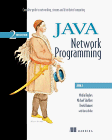
|
Java Network Programming : A Complete Guide to Networking, Streams, and Distributed Computing
by Merlin Hughes, Michael Shoffner, Derek Hamner, Conrad Hughes
second edition, published July, 1999
807 pages
From Book News, Inc. ®:
Provides useful techniques and code for networked applications development in
Java, focusing on streams and IP-based protocols such as TCP, UDP and
multicast. The second edition adds coverage of Java 2 and new material on
custom URL-related factories, Java I/O, RMI, servlets, and CORBA. The
sections on cryptography have been omitted, but will be available in a
separate book.
|
Cluster Computing
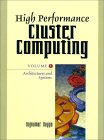 |
High Performance Cluster Computing: Architectures and Systems, Volume 1
by Rajkuma Buyya (editor)
Volume 1, first edition, published May 21, 1999
881 pages
High Performance Cluster Computing contains academic articles
concerning supercomputing collected from researchers around the world. Though
targeted primarily at graduate students and researchers in computer science,
the general reader may find great value in its overview of the current state
of high-performance computing. |

|
High Performance Cluster Computing: Programming and Applications, Volume 2
by Rajkuma Buyya (editor)
Volume 2, first edition, published June 25, 1999
664 pages
Volume 2 discusses programming environments and development tools, Java as a
language of choice for development in highly parallel systems, and
state-of-the-art high performance algorithms and applications. DLC: High
performance computing.
|

|
How to Build a Beowulf
by Thomas L. Sterling, John Salmon, Donald J. Becker, Savarese, Daniel F. Savarese
published May 28, 1999
261 pages
How to Build a Beowulf covers the essentials of today's "cheap
supercomputing" that is available with off-the-shelf PC hardware running
Linux. Filled with advice from the experts, this book is a working guide to
the essentials of planning, installing, and running a Beowulf cluster.
|
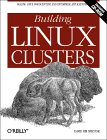
|
Building Linux Clusters
by David H. M. Spector
first edition, published July, 2000
332 pages
From Book News, Inc. ®:
For veteran Linux programmers, Spector explains how to tie a bunch of computer
together with a network and get them all to work on a large problem that has
been broken down into smaller pieces. NASA's 1994 Beowulf cluster for
supercomputer performance was built in this way with Linux at the fraction of
the cost for conventional approaches. The disk contains a version of Red Hat
Linux 6.2 customized for clustering, ready to go.
|

|
In Search of Clusters, Second Edition
by Gregory F. Pfister
second edition, published January, 1998
320 pages
From Book News, Inc. ®:
For people planning to purchase, sell, design, or administer a server or
multi-user computer system, explains the key strategy of clustering used by
most of the big computer companies for high-availability, high-performance
parallel computing. Includes a substantially annotated bibliography. Updated
and corrected from the 1995 edition.
|
Grid Computing
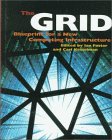
|
The Grid : Blueprint for a New Computing Infrastructure
by Ian Foster (Editor), Carl Kesselman (Editor)
first edition, published November, 1998
701 pages
Foster and Kesselman have gathered together essays, proposals, and ruminations
of more than 30 distinguished stars of the high-speed computing and networking
world in order to do four things: make the case for developing computational
grids, provide ideas on how such grids may be designed, demonstrate how the
grids might be used, and point out the research still needed to make it
happen. While the book was written to serve as a possible textbook in advanced
networking, it makes fascinating reading for anyone interested in the future
of network computing.
The text covers Grid applications, the programming tools required, the
services that will be provided, and an examination of Grid infrastructure.
Despite being the work of so many authors, the chapters are logically arranged
so that the knowledge needed to understand one chapter is provided by those
that precede it.
|

|
Grid Computing--Grid 2000 : First Ieee/Acm International Workshop, Bangalore, India, December 17, 2000 : Proceedings (Lecture Notes in Computer science)
by Rajkumar Buyya, Mark Baker
published March, 2001
Proceedings of the First IEEE/ACM International Workshop on Grid Computing,
held in Bangalore, India, December 17, 2000. Topics covered at the conference
included grid resource management, grid middleware and problem solving
environments, and grid test-beds and resource discovery.
|
|

|
Grid Computing: Making The Global Infrastructure a Reality
by Fran Berman, Anthony J. G. Hey and Geoffrey Fox
first edition, published April 8, 2003
1080 pages
From John Wiley & Sons, Ltd.:
"A number of corporations, professional groups, university consortiums, and
other groups have developed or are developing frameworks and software for
managing grid computing projects. The European Community (EU) is sponsoring a
project for a grid for high-energy physics, earth observation, and biology
applications. In the United States, the National Technology Grid is
prototyping a computational grid for infrastructure and an access grid for
people. Sun Microsystems offers Grid Engine software. Described as a
distributed resource management tool, Grid Engine allows engineers at
companies like Sony and Synopsys to pool the computer cycles on up to 80
workstations at a time.
"Grid Computing: Features contributions from the major players in the field;
Covers all aspects of grid technology from motivation to applications;
Provides an extensive state-of-the-art guide in grid computing
"This is essential reading for researchers in Computing and Engineering, physicists, statisticians, engineers and mathematicians and IT policy makers."
|
Parallel Computing
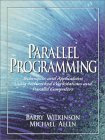
|
Parallel Programming: Techniques and Applications Using Networked Workstations and Parallel Computers
by Barry Wilkinson, C. Michael Allen
first edition, published August 12, 1998
431 pages
From Book News, Inc. ®:
Covers the techniques of parallel programming in a practical manner that
enables students to write and evaluate their parallel programs. The authors
introduce parallel programming techniques as a natural extension to sequential
programming, develop the basic techniques of message-passing parallel
programming, and address problem-specific algorithms in both non-numeric and
numeric domains. Also covers shared memory, Pthreads, image processing,
searching, and optimization. Requires no prerequisites in parallel programming,
as it assumes only C programming knowledge. Intended for undergraduate
computer science students and CS professionals.
|
| no image available |
Scalable Parallel Computing: Technology, Architecture, Programming
by Kai Hwang, Zhiwei Xu
published February 1, 1998
832 pages
This comprehensive new text from author Kai Hwang covers four important
aspects of parallel and distributed computing--principles, technology,
architecture, and programming--and can be used for several upper-level
courses.
|
Science
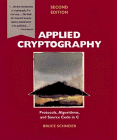
|
Applied Cryptography: Protocols, Algorithms, and Source Code in C
by Bruce Schneier
second edition, published October 18, 1995
784 pages
This book offers an authoritative introduction to the field of cryptography,
suitable for both the specialist and the general reader. The book adopts an
encyclopedic approach to cryptographic systems throughout history, from
ciphers to public key cryptography. Schneier also outlines cryptographic
protocols--the steps required for secure encryption--with the precision of a
chess master.
Readable, instructive, and truly exhaustive, this text is a must for
anyone wanting a solid introduction to the field in a single volume. Applied
Cryptography presents the source code for most algorithms and other procedures
in C rather than using pure math. The book also includes source code for the
Data Encryption Standard (DES) and other algorithms, but readers don't need
to know programming to benefit from this text. With a truly comprehensive
bibliography of over 1,600 entries, Applied Cryptography provides the reader
with plenty of sources for more information.
|

|
The Search for Life in the Universe
by Donald Goldsmith, Tobias C. Owen
third edition, published August, 2001
592 pages
Long recognized as the premier text for astrobiology courses, The Search for
Life in the Universe now appears in a completely revised and updated Third
Edition. This book engages students in astronomy by presenting a great,
unsolved mystery: How likely is life beyond earth, and how can we find it if
it exists? The text covers the fundamentals of astronomy and astrophysics,
including the discovery of more than 55 planets around other stars, and also
provides an overview of biology, geology, evolution, and the possibilities of
interstellar travel and communication. Written for readers with no background
in mathematics, the book includes 24 color insert pages and brilliantly
rendered illustrations by Jon Lomberg.
|
Non-Fiction

|
Cuckoo's Egg: Tracking a Spy Through the Maze of Computer Espionage
by Clifford Stoll
most recent edition published October 3, 2000
432 pages
A sentimental favorite, this book seems to have inspired a whole category of
books exploring the quest to capture computer criminals. Still, even several
years after its initial publication and after much imitation, the book
remains a good read with an engaging story line and a critical outlook, as
Clifford Stoll becomes, almost unwillingly, a one-man security force trying
to track down faceless criminals who've invaded the university computer lab
he stewards. What first appears as a 75-cent accounting error in a computer
log is eventually revealed to be a ring of industrial espionage, primarily
thanks to Stoll's persistence and intellectual tenacity.
|
Fiction

|
Contact
by Carl Sagan
reissue edition, published July, 1997
434 pages
It is December 1999, the dawn of the millennium, and a team of international
scientists is poised for the most fantastic adventure in human history. After
years of scanning the galaxy for signs of somebody or something else, this team
believes they've found a message from an intelligent source--and they travel
deep into space to meet it. Pulitzer Prize winner Carl Sagan injects
Contact, his prophetic adventure story, with scientific details that
make it utterly believable. It is a Cold War era novel that parlays the
nuclear paranoia of the time into exquisitely wrought tension among the various
countries involved. Sagan meditates on science, religion, and government--the
elements that define society--and looks to their impact on and role in the
future. His ability to pack an exciting read with such rich content is an
unusual talent that makes Contact a modern sci-fi classic.
|

|
Contact
starring Jodie Foster and Matthew McConaughey
movie released July 11, 1997
150 minutes
Based on Carl Sagan's novel, this movie inspired many of
SETI@home's volunteers to join that
project.
|

|
Cryptonomicon
by Neal Stephenson
published May 2, 2000
928 pages
This novel follows fictional characters in World War II and the present day
in their travels all over the world in intertwined plots which explore the
uses and ramifications of cryptography. It draws interesting parallels
between the cryptographic technologies used in both time periods and between
the characters themselves.
|
Journals
Other Resources
| Search for more books at:
|
|